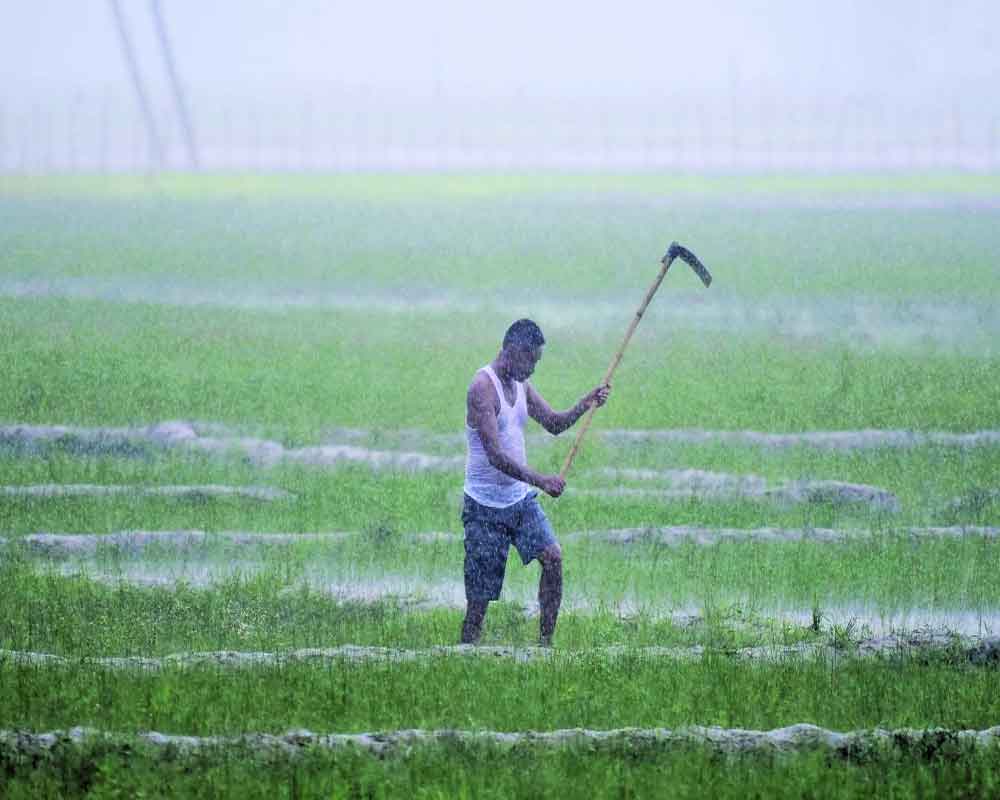In good news for the farmers and agriculture sector which is the main fulcrum of the Indian economy, the India Meteorological Department (IMD) has forecast above-normal rainfall during the upcoming June-September southwest monsoon season. The seasonal rainfall forecast is expected to be 106 per cent of the long-period average (LPA), which is 870 mm (1970-2020 average).
This is the first time in a decade the IMD has predicted above-normal rainfall, that too in its first-stage long-range forecast, which is issued nearly 45 days in advance of the actual onset of the southwest monsoon over Kerala on June 1. The IMD categorises the seasonal rainfall as above-normal when it ranges between 105-110 per cent of the LPA.
“The country can expect good monsoon rainfall during the southwest monsoon season this year. The seasonal rainfall will be 106 per cent of the LPA,” said Mrutyunjay Mohapatra, director-general of the IMD at a Press conference during the release of the first-stage long-range forecast for the southwest monsoon season in 2024.
M Ravichandran, secretary at the Union Ministry of Earth Sciences said “there are multiple favourable factors indicating a high probability for above-normal rainfall during the June-September period this year”.
“Of these, the vital oceanic factor is the El Nino, an event associated with the above-normal sea-surface temperatures prevailing over the equatorial Pacific Ocean. It is known to cause extreme heatwaves and suppress the Indian summer monsoon rainfall,” he said.
The ongoing El Nino event, the IMD said, is weakening.
“But it continues to remain in the ‘moderate’ category. Closer to the onset of the southwest monsoon season, El Nino Southern Oscillation neutral conditions are likely to establish,” added Mohapatra.
“Thereafter, La Nina conditions are expected to emerge during the second half of the monsoon season, which could bring higher-than-normal rainfall over the country,” he explained.
In a study, the IMD noted that during a La Nina year following an El Nino event (like 2024), the southwest monsoon rainfall had in the past remained normal or above (nine occasions during 1951-2023).
“But there are many other ocean-atmospheric dynamic factors which affect rainfall during the monsoon season apart from La Nina, which we do not have good knowledge of yet,” clarified Ravichandran.
The Indian Ocean Dipole - which is the Indian Ocean counterpart of El Nino - is in its neutral phase. But its positive phase is most likely to emerge during the coming months, according to the IMD.
The IMD DG pointed out that during the start of the monsoon season, positive IOD conditions would emerge. The positive phase of the IOD is good for the rainfall over India.
Another positive factor that could favour the monsoon this year is the below-average snow cover along Eurasia and the northern hemisphere during December-March.
The shift in the number of rainy days and the increase in heavy rain events align with global climate change trends, leading to more frequent occurrences of both droughts and floods. These extreme weather events can significantly impact agricultural productivity and food security.
The IMD said the historical data analysis between 1951 and 2023 reveals a correlation between La Nina following an El Nino event and above-normal monsoon rainfall in India. This indicates the importance of understanding large-scale climatic phenomena like El Nino, the Indian Ocean Dipole (IOD), and the snow cover over the northern Himalayas and Eurasian landmass in forecasting monsoon patterns.
While El Nino events typically bring weaker monsoon winds and drier conditions to India, the current shift towards La Nina conditions by August-September is expected to enhance rainfall. Positive Indian Ocean Dipole conditions and low snow cover in the Northern Hemisphere further support the likelihood of above-normal rainfall during the monsoon season.
Given that the southwest monsoon contributes significantly to India’s annual rainfall, which in turn is vital for the agriculture sector constituting a substantial portion of the GDP, accurate forecasting and preparation for potential climate-related challenges remain critical for sustainable agricultural practices and economic stability.


























